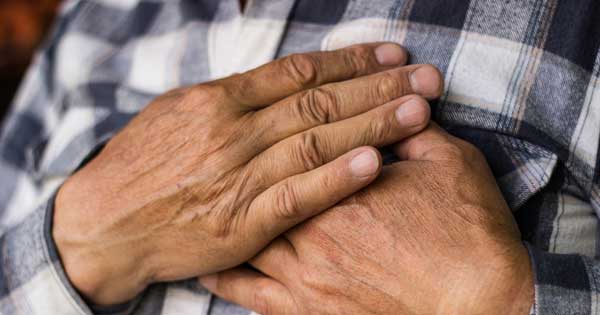Do you know what AED stands for?
It means ‘automated external defibrillator’, and if you still think you’re not familiar, just picture an episode of Casualty or Holby City, where they use those hand-held gizmos to deliver an electric shock to somebody’s chest and zap their heart back into action.

AED machines are increasingly visible outside of hospital wards, however, in shopping centres, train stations, office blocks – and Arrhythmia Alliance recently placed their 3,000th AED, as part of their ongoing Defibs Save Lives campaign.
Since the launch of the campaign back in 2013, the charity has been on a mission to make defibrillators more commonplace, in a bid to dramatically reduce the number of deaths from sudden cardiac arrest.
“100,000 people die in the UK each year due to sudden cardiac death, and 80% of these deaths could be avoided if diagnosed and treated, or a defibrillator was at hand as the event occurred,” states Trudie Lobban MBE, founder and CEO of Arrhythmia Alliance.
“We know of many people whose lives have been saved through the AEDs we and our partners have placed. However, more needs to be done, and our vision is to make AEDs as commonplace as fire extinguishers and smoke alarms across the UK.”
What exactly is an AED?
AED machines work by administering an electric shock with the aim of restoring natural heart rhythm. Modern AEDs are computerised and designed to only deliver a ‘shock’ if it’s required, which is determined via special sensors placed on the casualty’s chest. This makes them safe – and straightforward – to operate. “AEDs are so easy to use – anyone of almost any age can use one,” says Lobban. “Training is not required; open the case and the machine starts to speak to you, telling you exactly where to place the two pads and includes a diagram. The machine does the rest! It is that simple – even more simple than using a fire extinguisher.”
Why are they so vital?
As Arrhythmia Alliance points out, AEDs save lives. When somebody suffers sudden cardiac arrest (which is when their heart suddenly stops beating without warning, and is not the same thing as a heart attack, where blood supply to the heart is suddenly blocked) restarting the heart as quickly as possible is vital. For every minute somebody has to wait before defibrillation, their chance of survival decreases by 10%. When you consider it takes on average eight minutes for paramedics to reach somebody suffering sudden cardiac arrest, it becomes clear why having easily accessible AEDs in public places is so important. Without early intervention, the chance of surviving sudden cardiac arrest is just 5%. This increases to 9% if CPR is quickly administered. However, where there’s speedy access to an AED, survival rates leap up to at least 50%.
Is suddden cardiac arrest really a big concern?
Yes. In the UK, up to 250 people a day suffer a sudden cardiac arrest, often due to the heart going into ventricular fibrillation (VF), a form of arrhythmia, or abnormal heart rhythm. It can strike without warning, affecting people of all ages, and will cause somebody to suddenly collapse, lose consciousness and look extremely pale.
While it’s important to remember heart attacks and sudden cardiac arrest are two different conditions, heart attacks should also always be treated as a medical emergency, and a heart attack can sometimes lead to cardiac arrest (though most don’t). As Arrhythmia Alliance notes, sudden cardiac arrest is the UK’s leading killer, claiming more lives “than lung cancer, breast cancer and HIV/Aids combined”.
What should I do?
Keen to learn more? Arrhythmia Alliance have a wealth of information on their website, including a video, in which Jon Needle, community partnerships manager at East of England Ambulance Service NHS Trust, demonstrates how to use an AED to save lives in a community setting.
